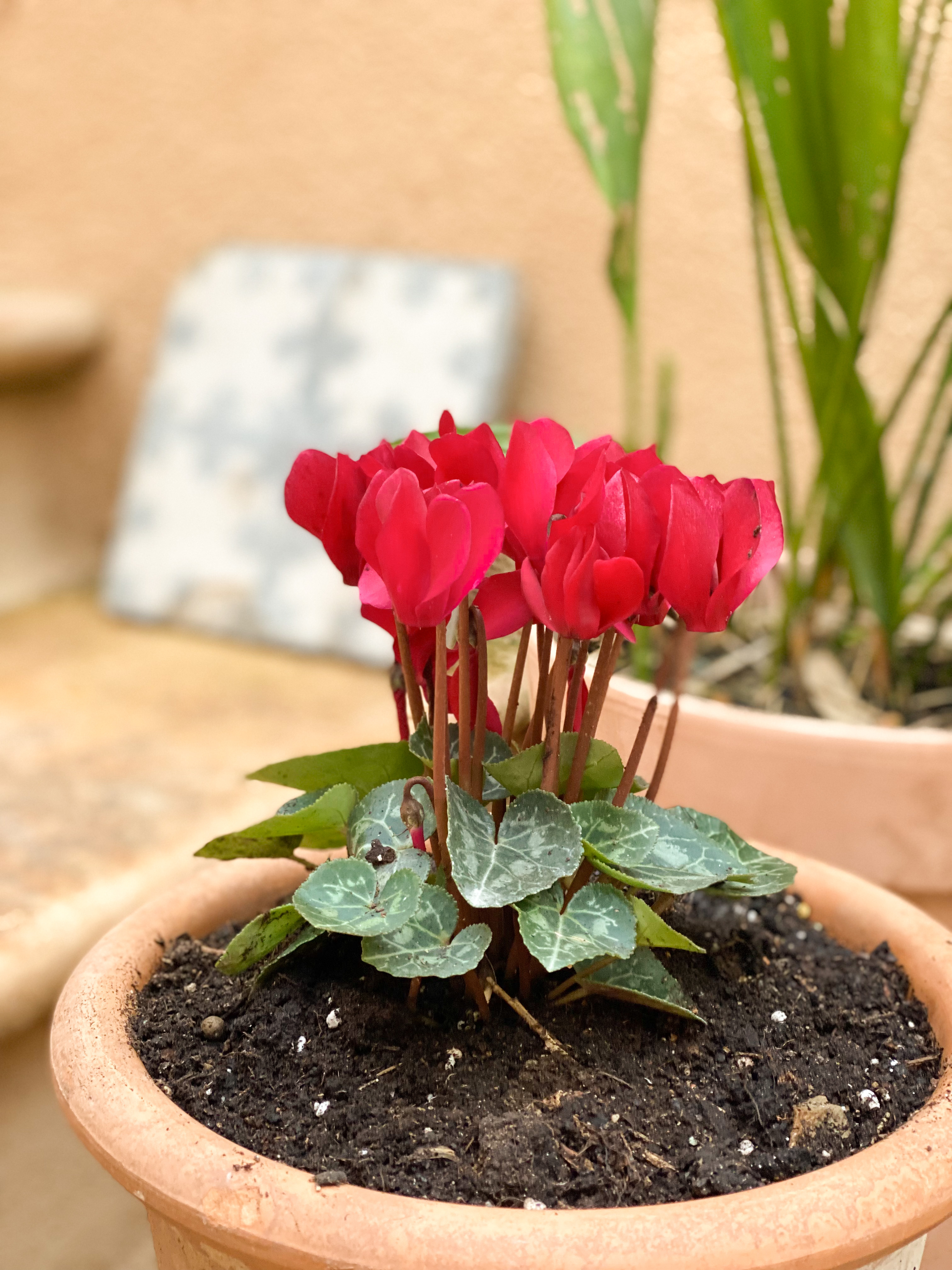Persian cyclamen
(Cyclamen persicum)

Description
Cyclamen persicum, commonly known as the Persian cyclamen, is a popular houseplant appreciated for its charming appearance, sweet fragrance, and ability to bloom in the winter months. It belongs to the Primulaceae family and is native to the Mediterranean region and the Middle East. Cyclamen persicum was first introduced to Europe in the 16th century, and since then, it has become a beloved houseplant all over the world. In this encyclopedia, we will explore the history, morphology, cultivation, and care of Cyclamen persicum. History Cyclamen persicum has a long and fascinating history. It was first described by the Greek botanist Theophrastus in the fourth century BCE. The plant was highly valued in ancient times for its medicinal properties, and it was used to treat a variety of ailments, including respiratory disorders, fever, and headaches. Cyclamen persicum was also believed to have magical properties, and it was used in love potions and other spells. In the 16th century, Cyclamen persicum was introduced to Europe, and it quickly became a popular houseplant. The plant's popularity continued to grow throughout the centuries, and today it is one of the most commonly cultivated houseplants in the world. Morphology Cyclamen persicum is a small perennial plant that grows from a tuber. The plant produces a rosette of heart-shaped leaves that can vary in color from green to silver. The leaves are often marked with intricate patterns of silver, gray, or white. Cyclamen persicum produces small, fragrant flowers that bloom in the winter months. The flowers are held on long stems that rise above the foliage, and they come in a range of colors, including white, pink, red, and purple. The flowers have five petals that are reflexed, meaning they curve backward away from the center of the flower. Cultivation Cyclamen persicum is relatively easy to cultivate, making it a popular choice for indoor gardeners. The plant prefers cool temperatures and indirect sunlight, making it an ideal plant for growing indoors during the winter months. To grow Cyclamen persicum, start by planting the tuber in a well-draining potting mix. Water the plant sparingly, making sure the soil does not become waterlogged. The plant will go dormant during the summer months, so reduce watering during this time. In the fall, when the plant starts to produce new growth, increase watering and fertilize the plant with a balanced fertilizer. Keep the plant in a cool, well-lit location, and it should bloom in the winter months. Care Cyclamen persicum requires careful attention to thrive. Here are some tips for caring for this popular houseplant: Watering: Cyclamen persicum prefers to be kept on the dry side. Water the plant when the soil is dry to the touch, but do not allow the soil to become waterlogged. Fertilizing: Fertilize Cyclamen persicum with a balanced fertilizer every two weeks during the growing season. Light: Cyclamen persicum prefers bright, indirect light. Avoid placing the plant in direct sunlight, as this can cause the leaves to scorch. Temperature: Cyclamen persicum prefers cool temperatures between 50-60°F. Avoid placing the plant in a location that is too warm or too dry. Dormancy: Cyclamen persicum will go dormant during the summer months. Reduce watering during this time and do not fertilize the plant. Conclusion Cyclamen persicum is a charming and popular houseplant that has been enjoyed by indoor gardeners for centuries.
Taxonomic tree:







